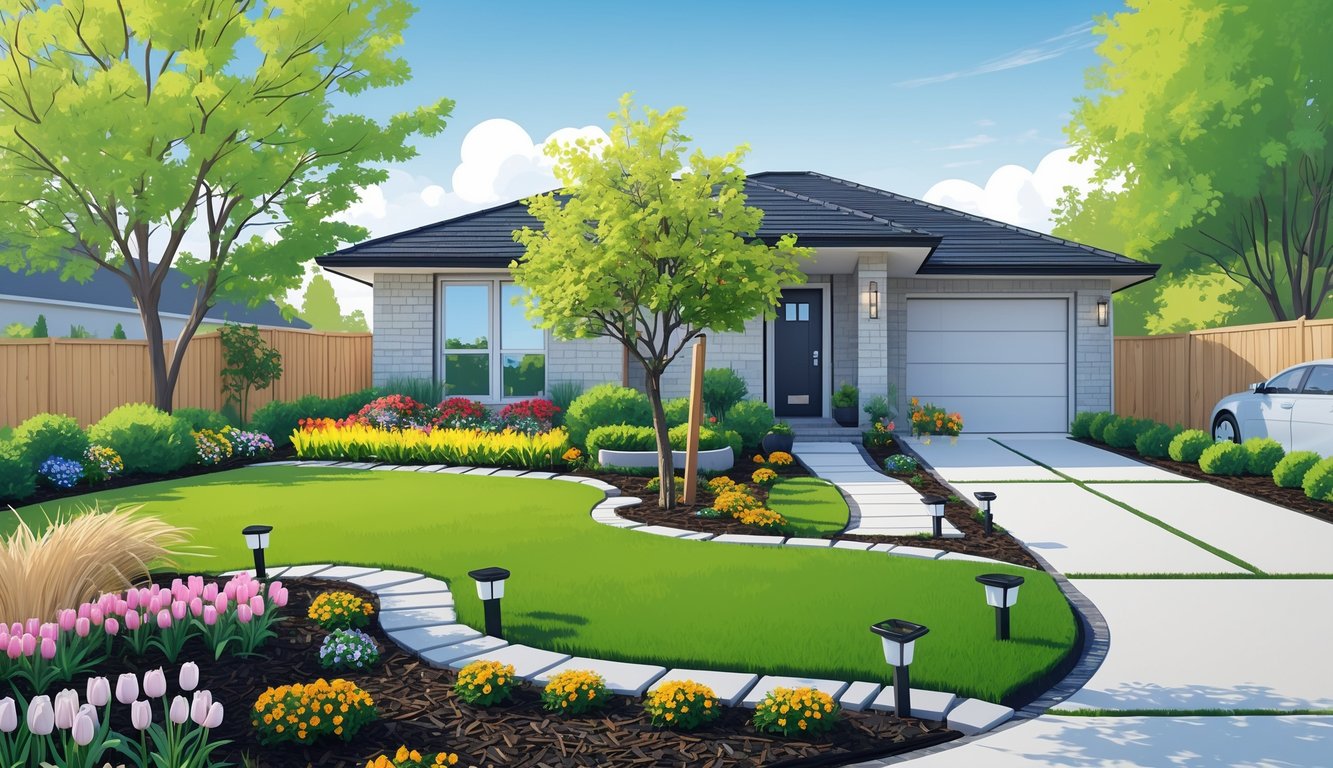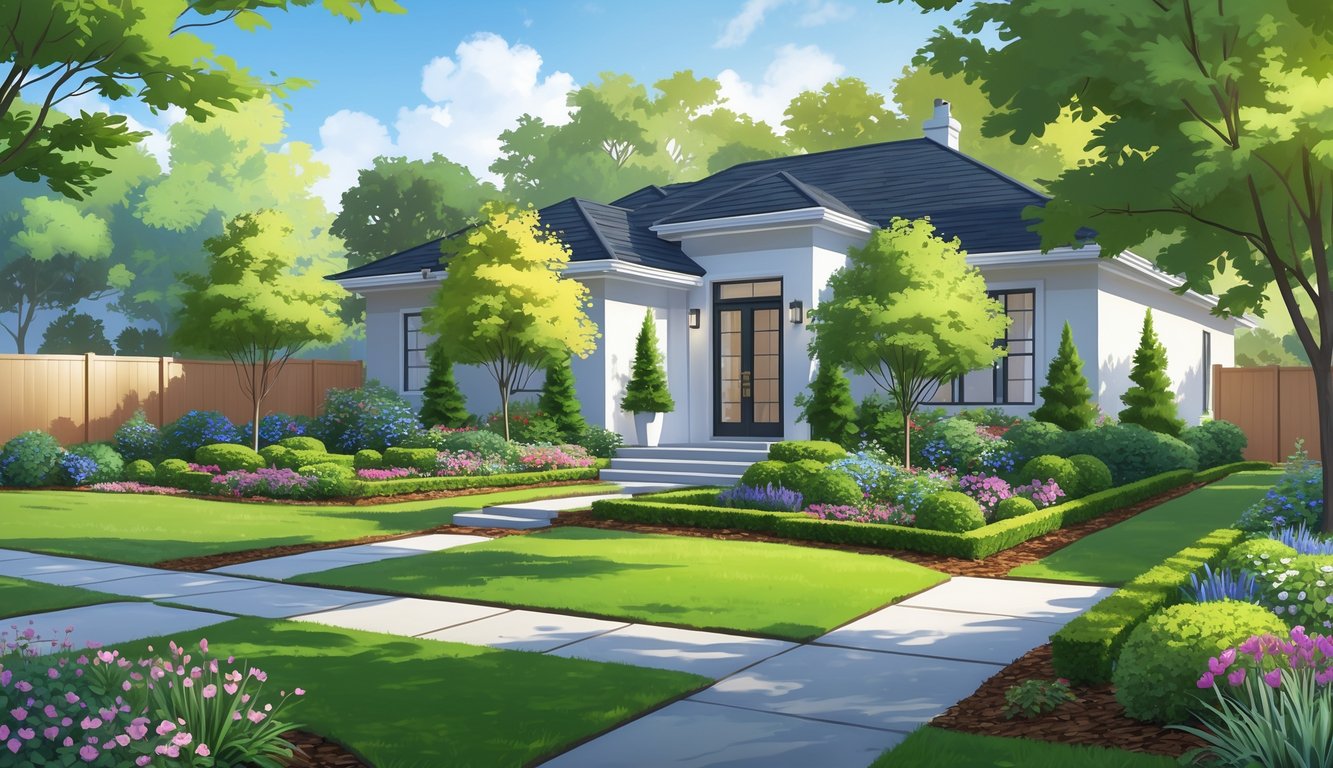
Landscaping With Plants for Beauty and Value

Picture me, yanking crabgrass with one hand, emailing work with the other, and cursing at the mulch. No one—absolutely no one—seems to care about what plants actually survive here. Why are people obsessed with curb appeal if they’re just going to re-mulch every six weeks? I want landscaping that doesn’t make me broke or force me to pretend the backyard isn’t a set from a crime show.
Choosing Native and Drought-Resistant Plants
Those little tags at the nursery that say “low water needs”? Lies. Total lies. I watched my neighbor’s lavender just cook to death last summer at 112°F. And yet, realtors keep insisting buyers want “easy care.” Lisa Stryker from NALP told BHG that tidy yards get all the attention. Sure, but if I have to stand there hand-watering for an hour, that’s not “low maintenance.” Native stuff—salvias, coneflowers, switchgrass—those actually come back and don’t judge you for forgetting. I know people with black thumbs who get compliments just because they planted agaves. Ecologists keep saying deep roots help with water and utility bills and attract pollinators. I did the math once and cut my water bill by 40% swapping out thirsty annuals. But, like, try planting a saguaro in Michigan and see what happens. It’s all about the right plant, right place, or you’ll regret it faster than you can say “HOA violation.”
Mature Trees and Tree Care
Here’s where it gets weird—mature trees, apparently, can boost your property value by up to 20%. Arborists have charts for this, but nobody on my street trims their trees before a storm. Fact: appraisers love shade trees, but if you ignore them, they’ll eat your wallet alive. I’ve seen clients cough up $2,000 just to get branches off the roof before listing. Plant a sapling? Wait ten years. Buy a house with old oaks? Instant win. Certified tree care is not optional unless you enjoy car damage. And, wow, it gets petty: one neighbor accused another of “root trespass.” Suddenly, there’s a surveyor in the yard. I just pay for annual maintenance and hope for the best.
Artificial Turf for Low Maintenance
August rolls around, real grass is dead, and the porch is surrounded by mud. Kids aren’t playing on that. I rolled my eyes at artificial turf until a designer told me it meant less sneezing for me and my dog, zero mowing, and no mud. The new stuff? Looks real enough that inspectors have to crouch down. It’s got drainage tech now, so puddles and gnats are mostly gone. Upfront cost is rough, but Plantisima says buyers don’t care—just tell them it’s lower water bills and no sprinklers to fix. Flippers love it, especially where lawns fry every summer. But nobody warns you how hot that turf gets. I burned my foot last year. Test a patch before you go wild. And please, don’t picnic on it at noon.
Irrigation Solutions for Health and Savings
My sprinklers? They spin like they’re in a parade, but my neighbor insists his lawn “never needs more than a glance.” Meanwhile, my grass dies by June. Turf pros say a good irrigation system beats fertilizer every time. I mean, I want to believe them.
Installing an Irrigation System
I thought digging up my yard for pipes was insane—until that house on Elm Street sold for $40k more, just because their lawn stayed green. Installing a system isn’t cheap. The National Association of Realtors did a survey (2024, if you care) and claims you get back 85% or more of your money, either in home value or water bill savings. Everyone online thinks they’re an irrigation expert, but nobody tells you how much clogged pipes suck. Seriously, my weekend plans have died because of that. Pro systems now? They cover zones, regulate pressure, drip water so precisely it’s like magic compared to dragging hoses. Modern systems waste less water, don’t drown your peonies, and keep the lawn looking lush. But if you DIY and hit the main line, don’t blame me.
Smart Water Management
It is so embarrassing watching sprinklers run in the rain. My six-year-old asked, “Why are we watering puddles?” Tech’s actually caught up—smart controllers check weather, shut off for rain, and dose just enough on dry days. It’s not foolproof; my rain sensor fried in August and the garage flooded. Still, the savings are real. Minnesota water authorities say targeted systems can cut usage by 30–40%. Not a typo. No more fighting with the city over water bills. Soil sensors now send real-time data—if your St. Augustine grass still looks dead, it’s not the system’s fault. Plus, leaks or pressure drops show up as alerts, so no more guessing. I changed my watering schedule from my phone last week. It felt weirdly powerful.
Sustainable Landscaping Strategies
Here’s what bugs me: people install one rain barrel and claim they’re “green.” Buyers and appraisers are looking at numbers now—sustainable landscaping can mean 6–11% higher resale, says the Journal of Sustainable Real Estate. My water bill alone convinced me. This isn’t just for eco-warriors anymore.
Xeriscaping for Eco-Conscious Buyers
I found myself doom-scrolling drought maps at 2 a.m. Xeriscaping isn’t just for Arizona. Swap out turf for zoysia or blue grama, add gravel mulch, and suddenly HOA board members are suspiciously friendly. Buyers love it—no mowing, ever. My neighbor ripped out his lawn for native groundcovers, sold at 8% over asking, and moved to Florida. He left the sprinkler timer behind, which still confuses me.
Local nurseries push native perennials—Salvia, Coneflower, yarrow—that barely need fertilizer. Redfin says xeriscaping wins with eco-minded buyers: low maintenance, water bills cut in half. I’ve seen the best color in drought years, mulch rings holding more moisture than my neighbor’s “smart” system. Rocks aren’t boring, either. Ask a landscape architect—they’ll tell you curb appeal isn’t always about grass.
Eco-Friendly Garden Design
My brother-in-law won’t shut up about softscaping versus hardscaping, but buyers? First question: “Is it chemical-free?” Compost beds, pollinator corridors, permeable pavers—open houses turn into pop quizzes on biodiversity. Switching annuals for native shrubs (buttonbush, inkberry) worked best for me after two botanists told me to stop wasting money. Those hold soil, need one trim a year.
Now, real estate listings brag about native gardens. One agent literally gave me a chart for rainwater harvesting (1,200+ gallons a season, if you’re wondering). Tip: install a rain garden and watch buyers show off their “butterfly haven” while their neighbors still spray for grubs. I counted five new bird species after I ripped out invasive ornamentals for native ferns. Maybe this “eco-friendly” thing isn’t just marketing.